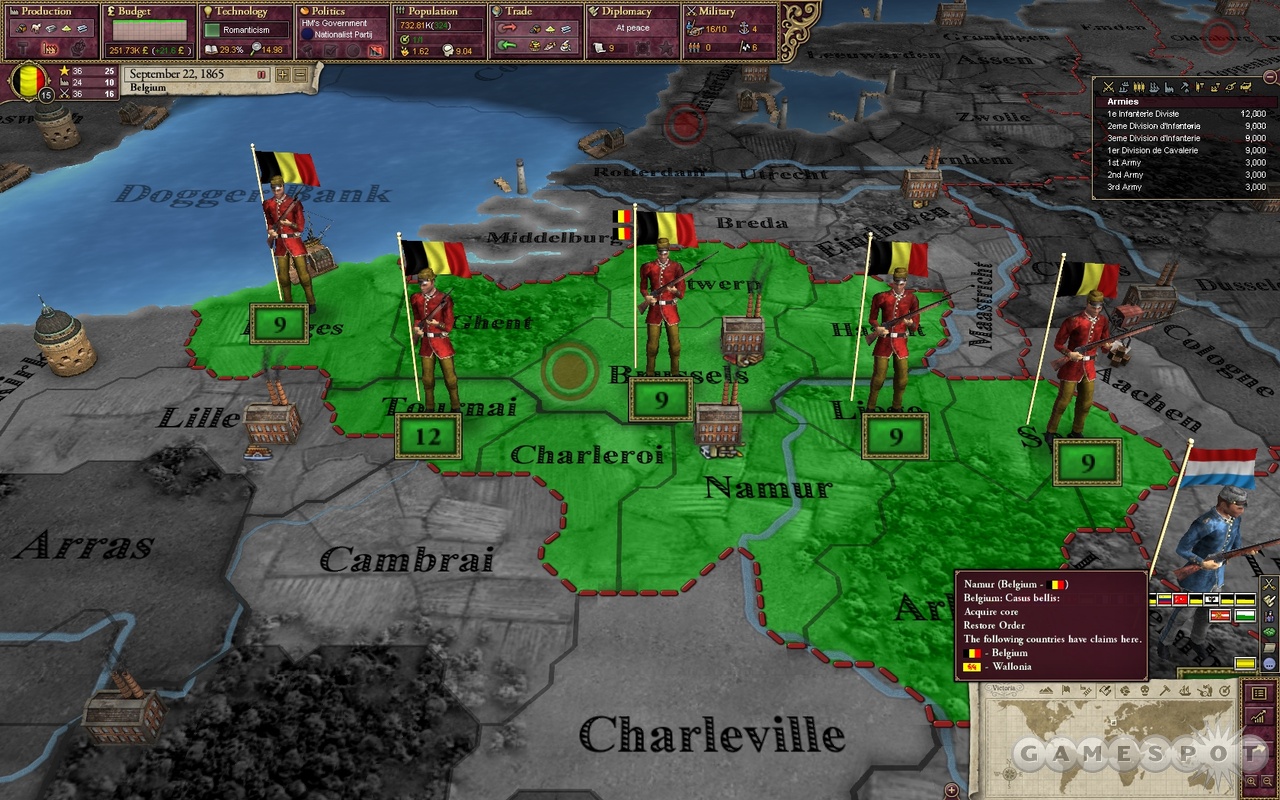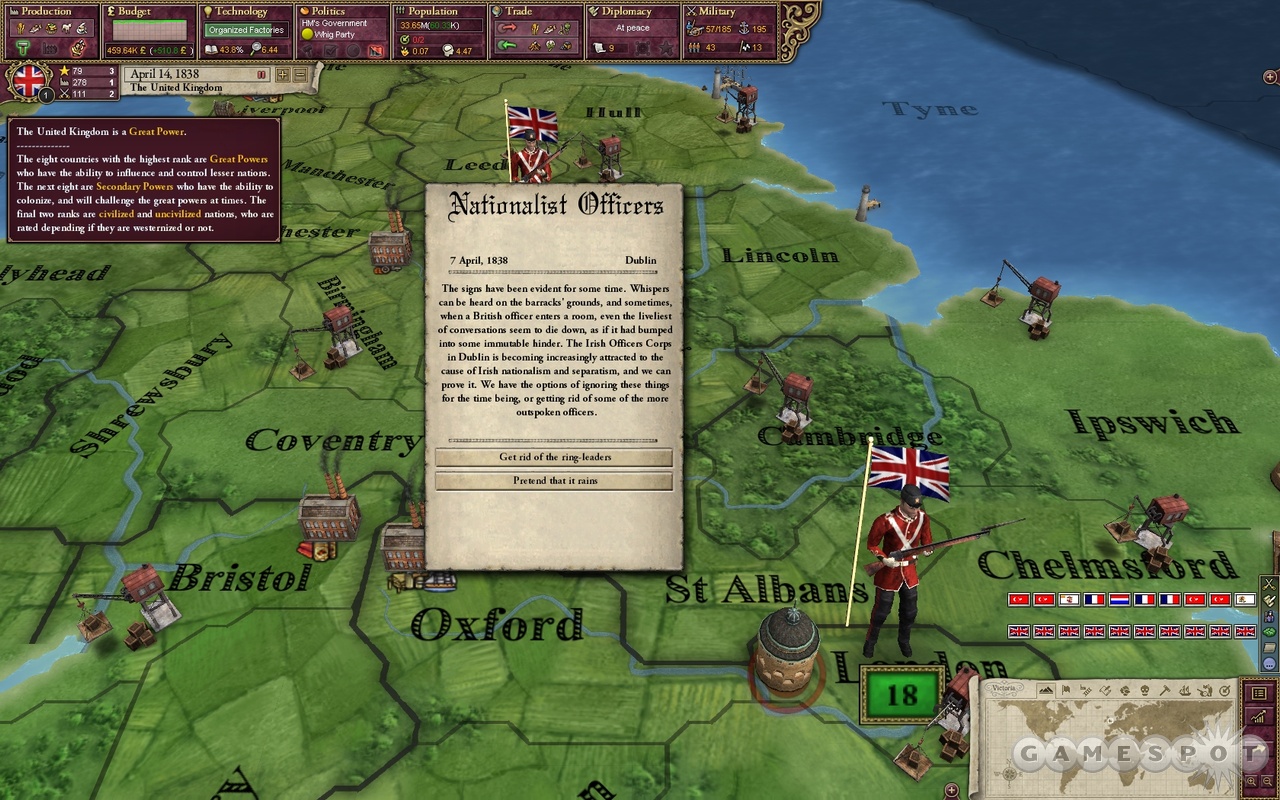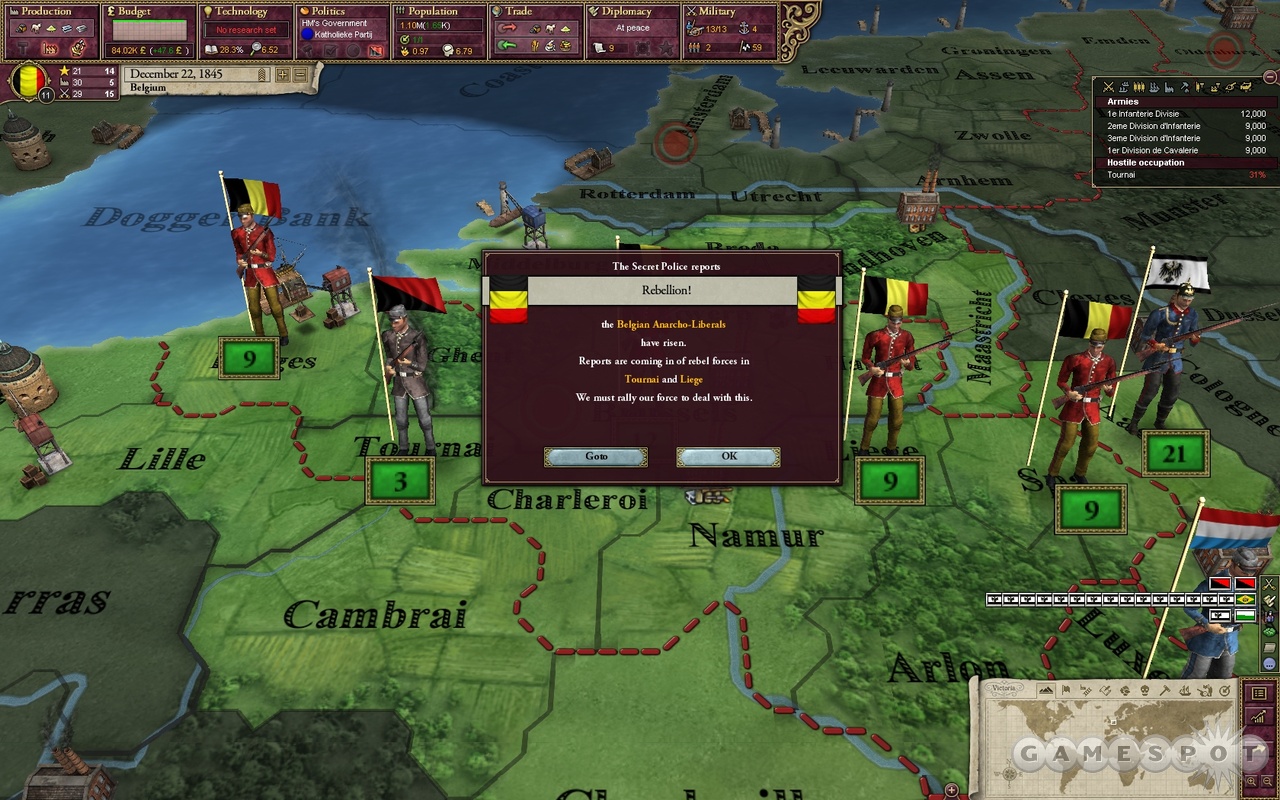The sun may never have set on the British Empire of the 19th century, but it is finally starting to rise on the Victoria series of grand strategy games. Paradox Interactive's sequel to its buggy and confusing 2003 game about nation building during the Industrial Age has been well worth the wait. Victoria II dumps most of the bugs, fussy micromanagement, and headache-inducing complexity that earned the original game a lot of criticism. In their place is a (mainly) stable game with kinder, gentler mechanics that eliminate most of the finicky tedium while leaving you at the helm of the ship of state. There's also an intuitive interface and a series of comprehensive tutorials that teach you the game's fundamentals. This still isn't a walk in the park, as hours of experimentation are necessary before you get comfortable with statecraft in the 1800s. But it is the game that Victoria: An Empire Under the Sun should have been, and it is both playable and addictive once you get past the initial steep learning curve.

Concepts behind Victoria II will be familiar to those who have played any of the many entries in Paradox's grand strategy series like Europa Universalis and Hearts of Iron. This is a geopolitical simulation writ large, where you take control of the state of your choosing at the dawn of the Victorian era in 1836 and guide it in real time for a century. The solo game is the primary way to play (there is just the single grand campaign option here), although there is multiplayer support for the truly hardcore who have many hours to spend dealing and dueling with LAN/online rivals. Most of the game comprises map screens detailing hundreds of nations and thousands of provinces (with fairly dated, yet still credible board game-styled visuals--although the text is now microscopic when playing at higher resolutions over 1680x1050). There are also menu lists that cover every aspect of Victorian society, including population, religion, trade, taxation, diplomacy, warfare, and the many technological advancements of the era. Ruling a state involves tricky balancing acts, where you play off things like the taxes and tariffs needed for a country to pay the bills against the desire of the great unwashed to keep a few shillings in their pockets for luxury items. You also have to balance the gradual demand for societal reform against the conservative desire for everything to stay the same. If you go too far in either direction, you wind up with an unhappy populace that might revolt.
All of these complicated factors are put together quite well. Where the original Victoria was little more than a shoebox full of random scraps and ideas, its successor feels like a properly planned-out game. You notice this as soon as the main menu loads up; the game now offers a fairly complete series of tutorials that walk you through the interface and most of the situations that you will encounter in the real grand Campaign mode. The new interface is also a godsend. All of the core features of your nation are accessed via eight buttons on an information bar at the top left of the screen. So if you want to tweak diplomacy, adjust tax rates, order technological improvements, or field an army, all you do is click a single button to access the requisite menus, and then, you can have at it.

Making changes is also a snap for the most part. You deal with slider bars for things like taxation and tech trees for technological innovations like railroads and assembly lines. It's still more than a little scary at first because you are hit with formidable lists of policy initiatives and no firm idea how they will affect your nation until you start experimenting (in-game cabinet advisors providing tips could have been very helpful). The politics screen alone boasts dozens of choices where you can do just about everything, such as outlawing trade unions, OK'ing slavery, and changing voting rights so that the rich get more of a say in elections. Despite the number of options, though, you can gradually figure out how moves will change the structure of your nation. All of the necessary information is at your fingertips, albeit in the form of pie charts and various stat columns.
Getting into a grand strategy solo game can be an addictive experience, too, at least after you've gone through a few test runs with games you don't expect to finish. Matches are complex, although you can automate fussy features, such as trade (which is so complicated that it seems just about impossible to deal with it manually). Population is the biggest concept to wrap your head around. The game comes with classes and a dozen or so occupations that all need to be carefully managed. You have to delve into the nitty-gritty quite often to maintain a balance, making sure that each group of citizens has access to employment, can meet basic needs, and has access to luxury goods. This isn't nearly as painstaking as it was in the first Victoria, thankfully, because now you're more of a hands-off leader who nudges citizens in the right direction by encouraging specific occupations and products, courtesy of things like setting national focus. Demands rise over time, of course, to reflect the progressive liberalism and the rise in the standard of living of the Industrial Age. You have to watch a number of stats here, mainly making sure that the national consciousness that governs how citizens demand reforms and the militancy that dictates how badly people want to take to the streets both grow at no more than a slow and steady pace.

Not surprisingly, it can be very tough to keep people happy for long. When things go well, they tend to go really well. You can readily settle into long periods of stable growth, issuing periodic reforms, making the economy hum along, and even taking a middle power up the ladder to compete with the big boys like Great Britain and France all while listening to the sedate classical soundtrack of the 19th-century's greatest hits. But revolts take place too often, with the people demanding reforms as the years go by and you being unable to issue them because of the power of the "stay the course" conservatives in the upper house of your government. Expect big trouble after 1860, with all of the brewing unrest often exploding into massive revolts of communists, reactionaries, Jacobites, and pals. This doesn't happen all the time, however. Some games roll along without a hitch, while others see nation after nation descending into chaos with revolutionaries rioting in every province. Modders have been working on solutions already, so perhaps Paradox will take note and issue a patch sometime soon. Yet even with the revolt annoyance, there are remarkably few "How do I do this?" and "How the hell did that happen?" moments here. Only the odd desktop crash hints at a tiny bit of instability.
While it isn't revolutionary enough to win over those who have found Paradox's grand-strategy efforts too grueling in the past, Victoria II is a more accessible version of this demanding style of game. That said, this remains a challenging, intricate experience that won't be for everyone. It still hits you with a learning curve that initially looks like the north face of K2 to the newbie who has never played this sort of game before. The revolt issue is also frustrating when it pops up, especially because it generally does so after you've invested a few decades into a campaign. Still, this is a leap forward from its predecessor, and it does show that Paradox has been listening to its critics and is tying to make its games as mainstream as possible without turning off the hardcore historical strategy fans that are the company's bread and butter.